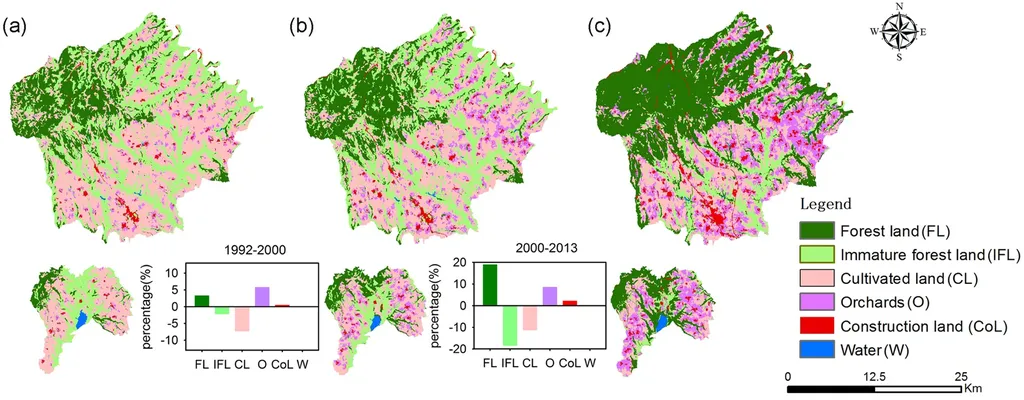In the heart of China’s Loess Plateau, a region known for its fragile ecosystem and critical agricultural output, a new study is shedding light on how government policies and farmers’ mindsets can drive soil restoration. The research, led by Xiaolan Wang from the College of Economics and Management at Northwest Agricultural and Forestry University, explores the intricate dance between regulation, cognition, and action, offering insights that could reshape soil remediation strategies worldwide.
The Loess Plateau, spanning parts of Shaanxi and Shanxi provinces, has long been a hotspot for soil conservation efforts. Its loessial soils, while fertile, are highly susceptible to erosion, threatening agricultural productivity and regional stability. Wang’s study, published in the *International Soil and Water Conservation Research* (translated as *International Journal of Soil and Water Conservation*), delves into the factors that motivate farmers to adopt soil remediation practices, with a particular focus on the role of government regulations and farmers’ ecological cognition.
The research team surveyed 403 farmers, employing an ordered Probit model and moderation effect analysis to dissect the data. Their findings reveal a nuanced picture of the drivers behind soil restoration efforts. “Farmers generally accept and implement soil remediation technologies,” Wang explains, “with deep plowing being the most prevalent practice.” This acceptance, however, is significantly influenced by government interventions, particularly subsidies and technical training.
The study highlights that subsidies play a crucial role in encouraging smallholder farmers to adopt soil restoration practices. “For smaller operations, the financial incentive provided by subsidies can be the tipping point that makes soil remediation feasible,” Wang notes. In contrast, larger operations benefit more from technical training, which equips farmers with the knowledge and skills to implement more sophisticated restoration techniques.
But the story doesn’t end with policy interventions. Wang’s research also underscores the importance of farmers’ green ecological cognition—their awareness and understanding of ecological issues and the value of sustainable practices. “Farmers’ green ecological cognition positively influences their restoration practices and moderates the impact of government regulation,” Wang says. This finding suggests that education and awareness campaigns could amplify the effectiveness of government policies, creating a multiplier effect that boosts soil restoration efforts.
The implications of this research extend far beyond the Loess Plateau. As the world grapples with the challenges of climate change and degraded soils, understanding the interplay between policy, cognition, and behavior becomes increasingly vital. “Our insights offer a new perspective for refining soil remediation policies and examining the global applicability of government regulation and farmers’ cognition,” Wang states.
For the energy sector, the commercial impacts are significant. Healthy soils are not just crucial for agriculture; they also play a pivotal role in carbon sequestration and mitigating climate change. By promoting soil restoration, policies can enhance the sector’s ability to deliver sustainable energy solutions, reducing its carbon footprint and contributing to global climate goals.
Moreover, the study’s findings could inform the development of more targeted and effective policies. By recognizing the different needs and responses of various farmer types, policymakers can tailor their interventions to maximize impact. This could lead to more efficient use of resources, better outcomes for farmers, and a healthier environment.
As the world seeks to balance agricultural productivity with environmental sustainability, research like Wang’s provides a roadmap for navigating this complex landscape. By harnessing the power of policy and cognition, we can unlock new possibilities for soil restoration, paving the way for a more sustainable future.

